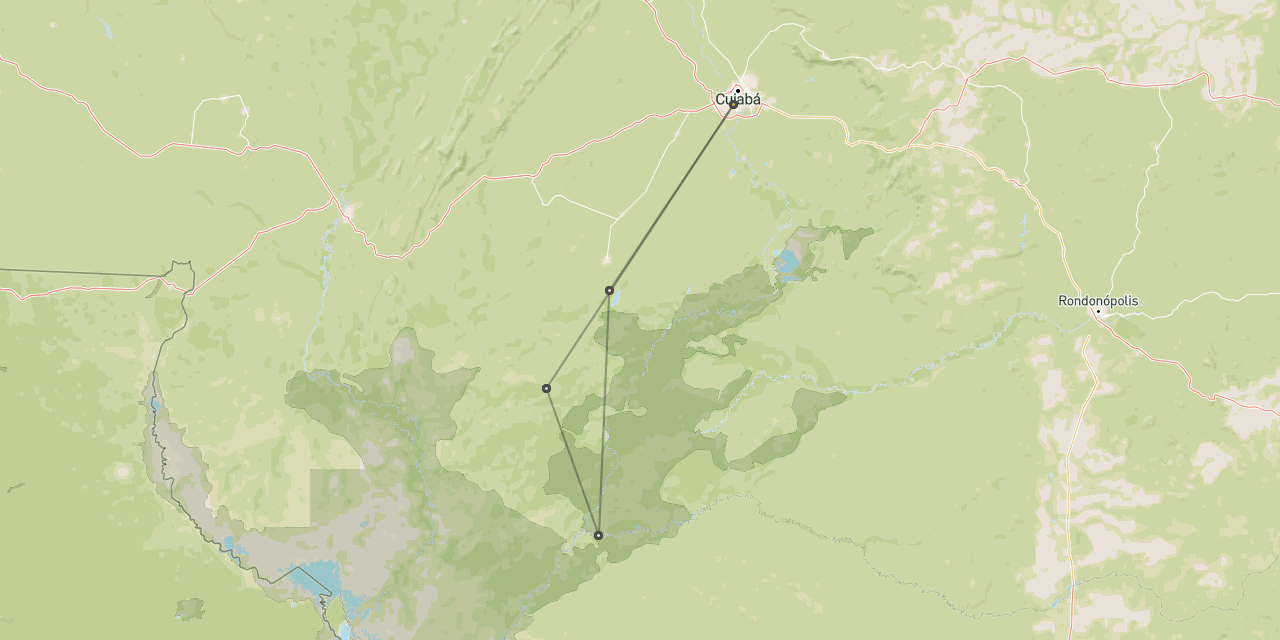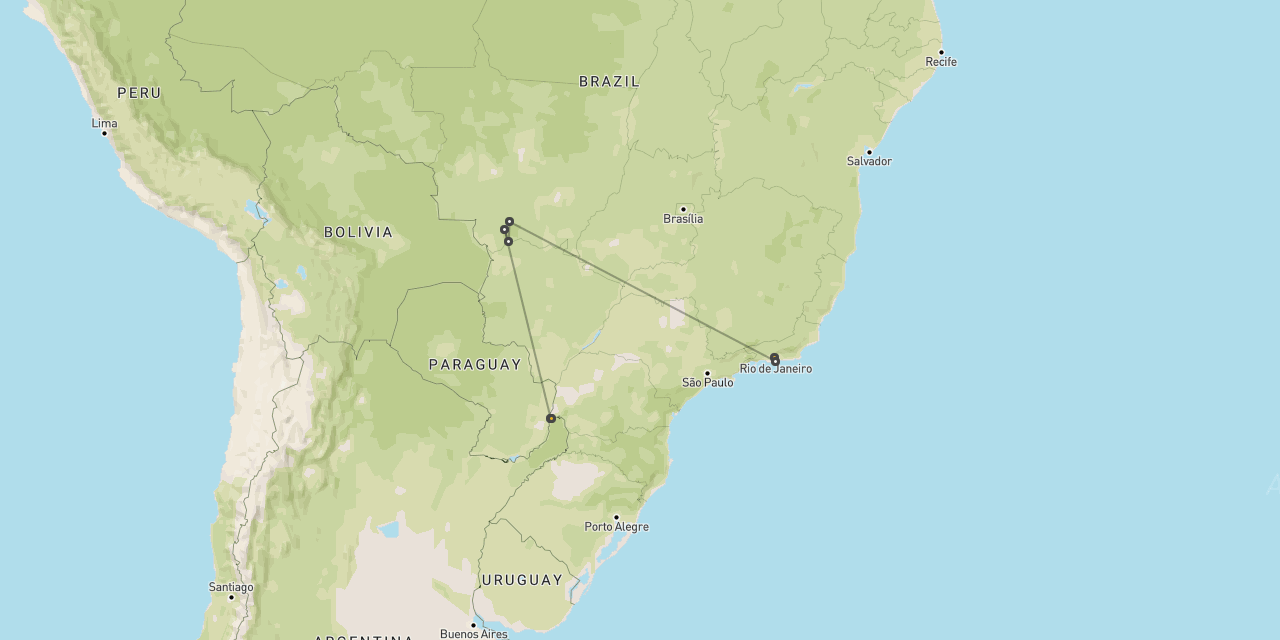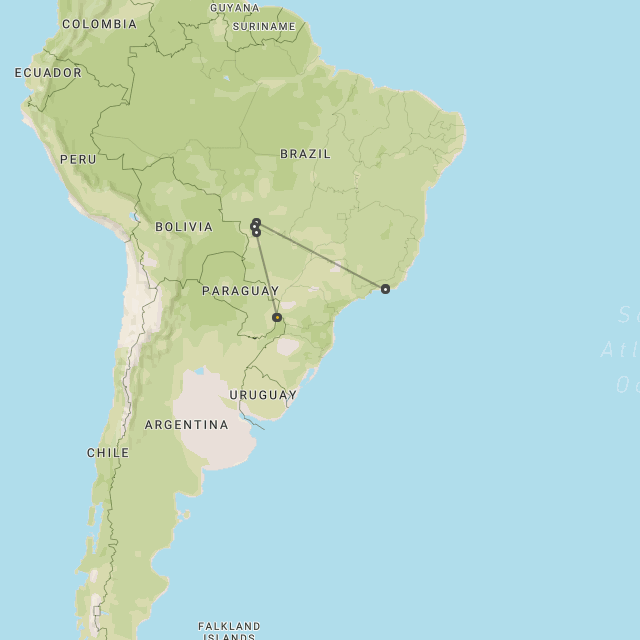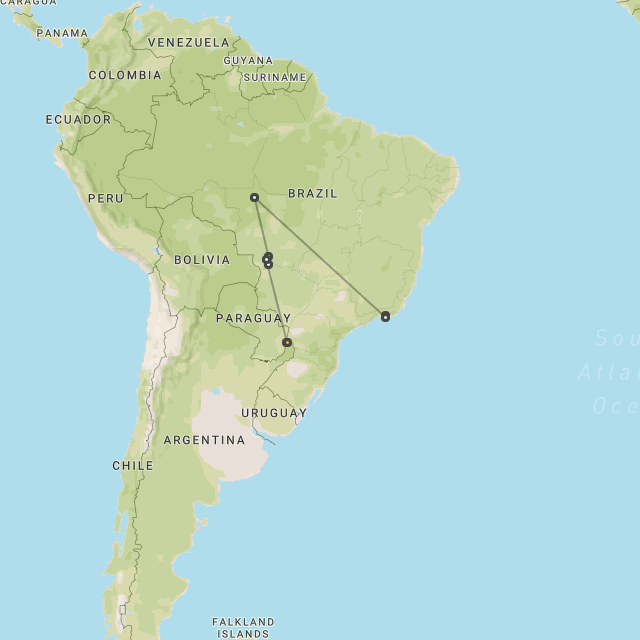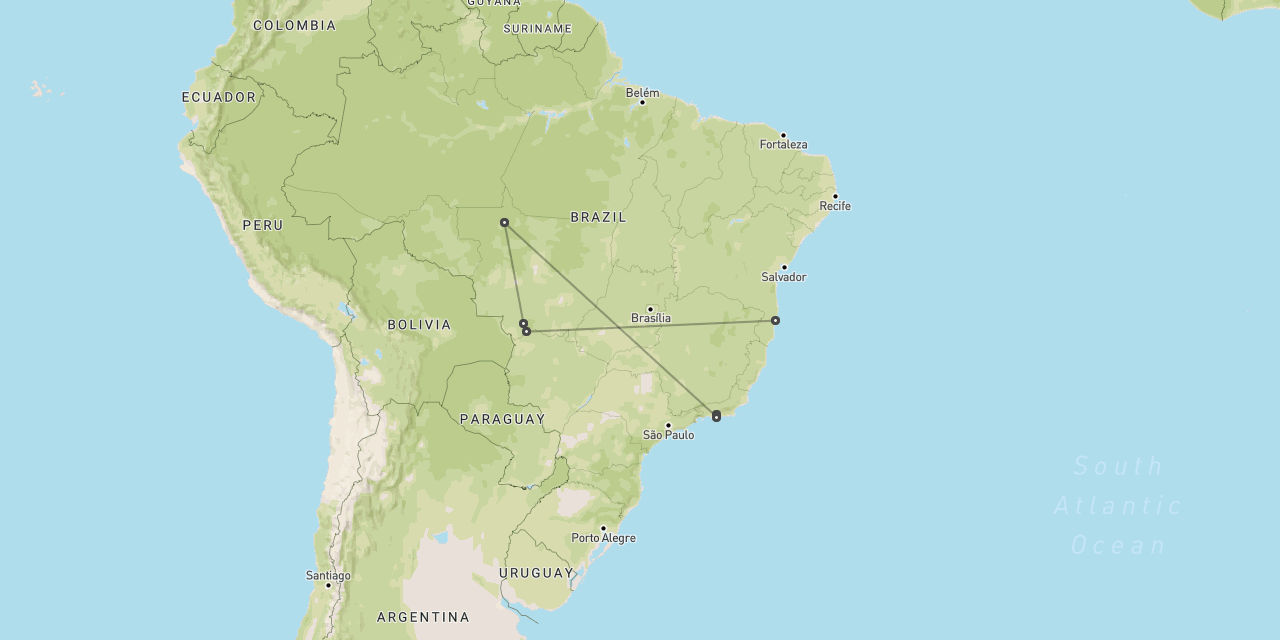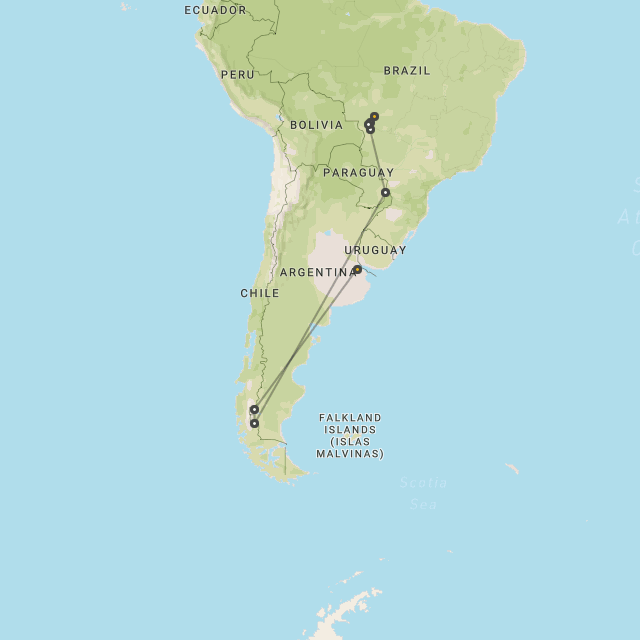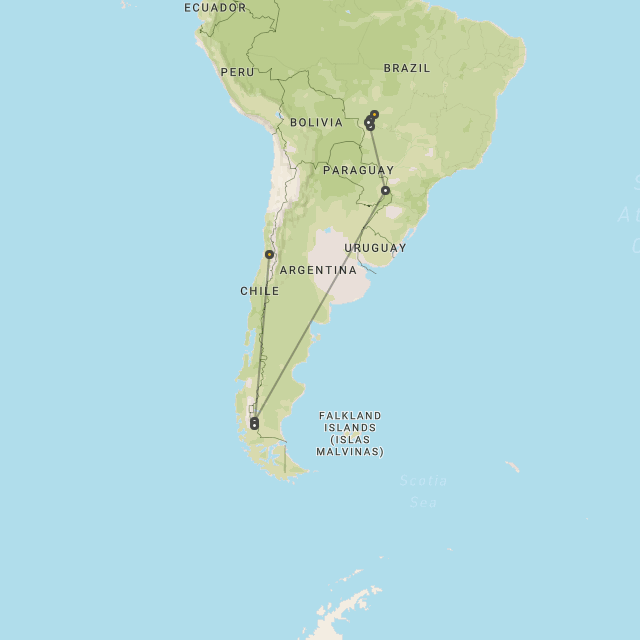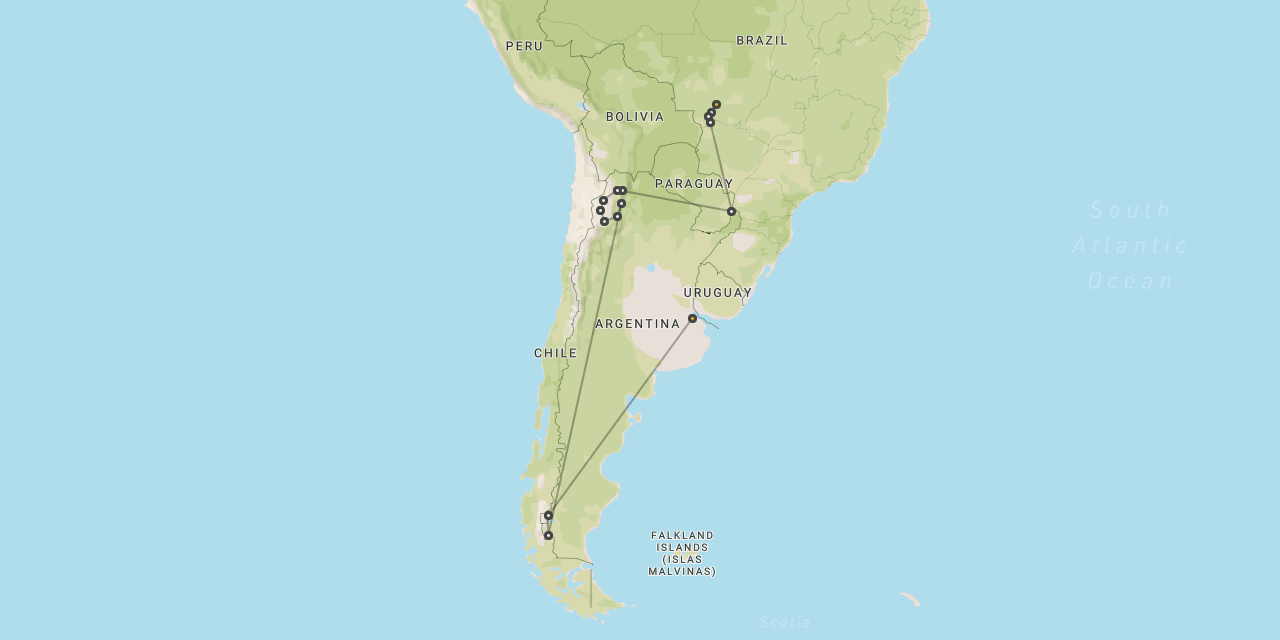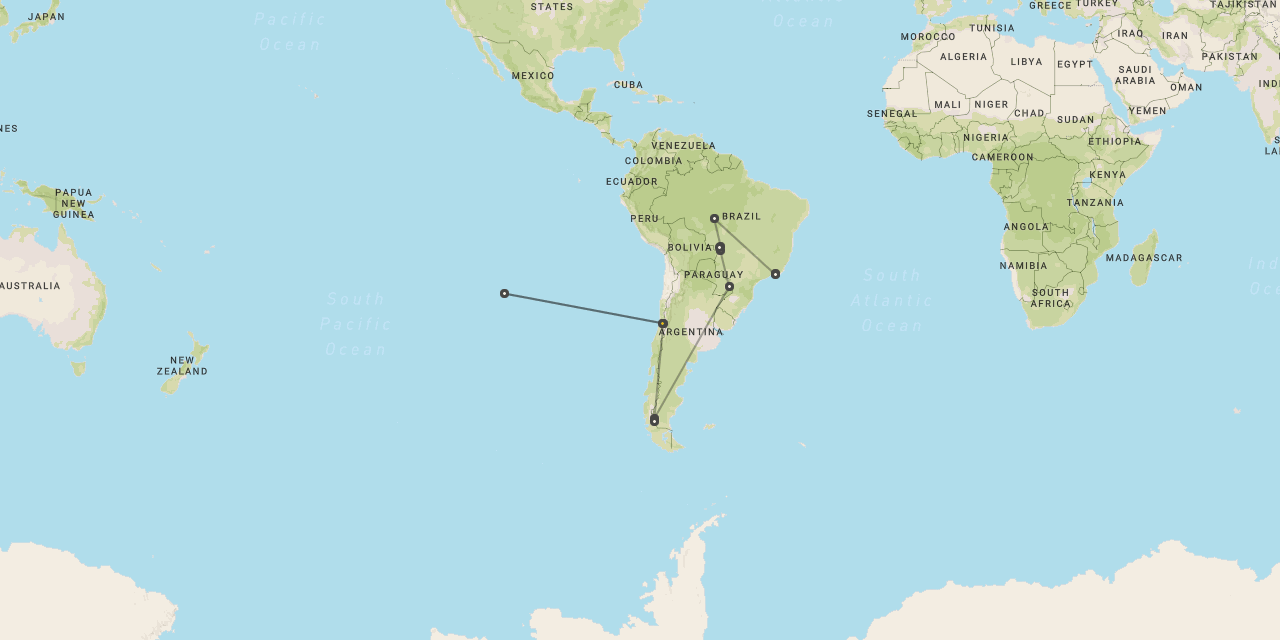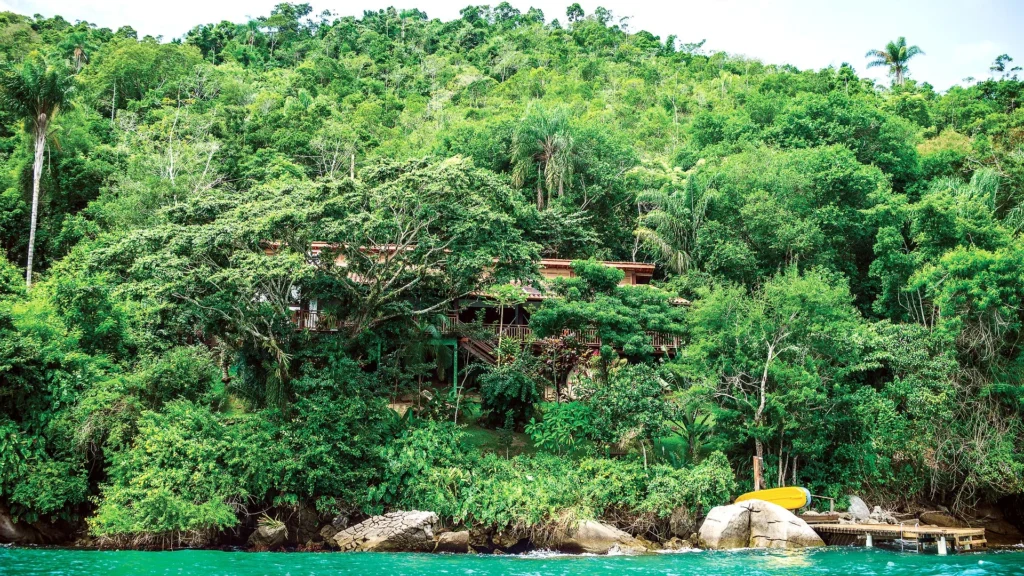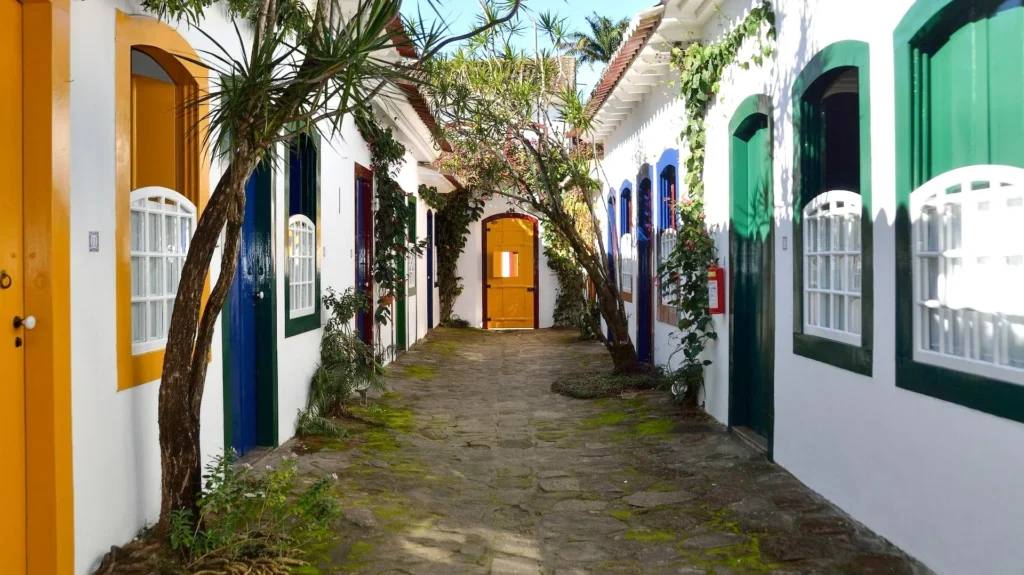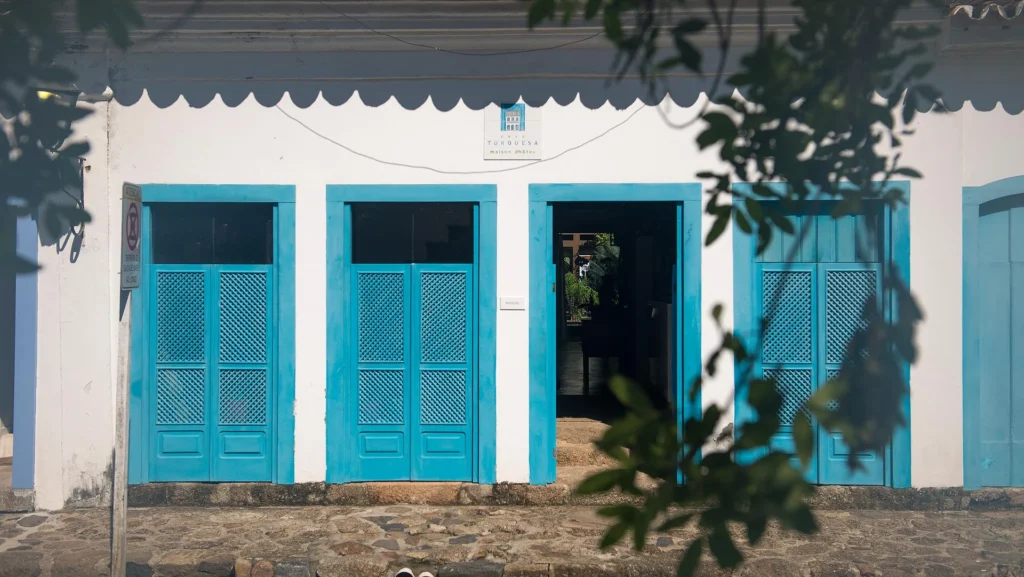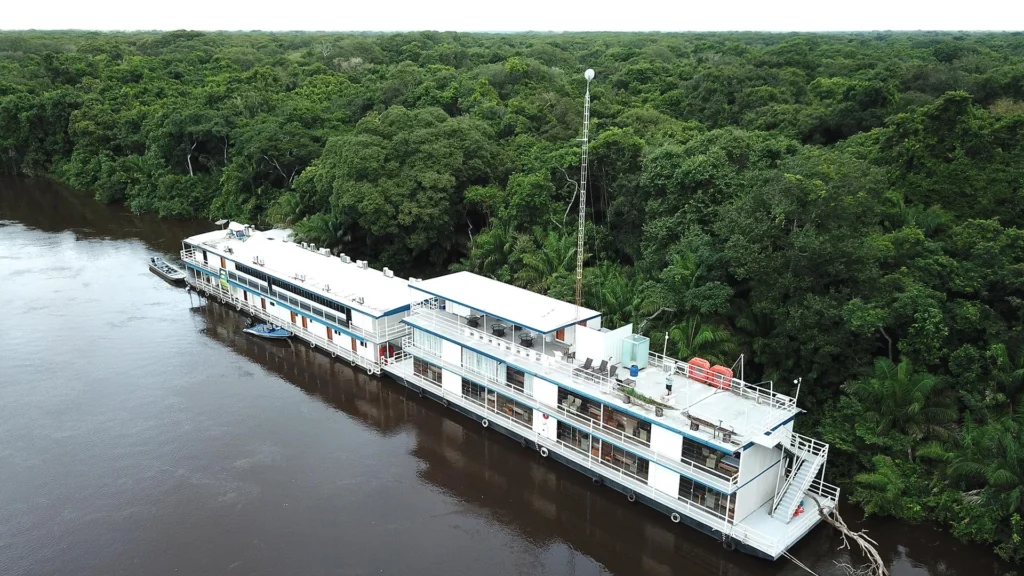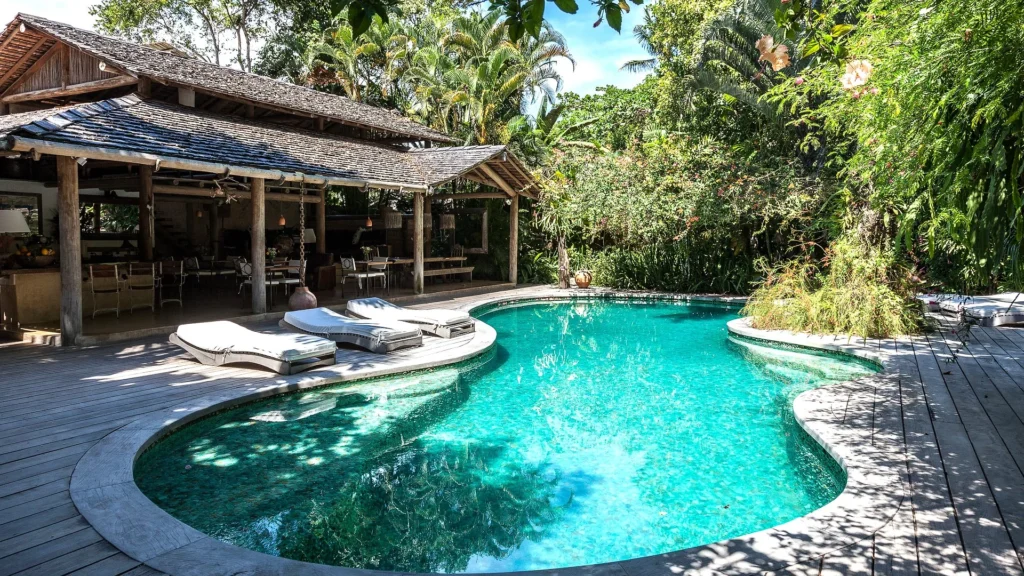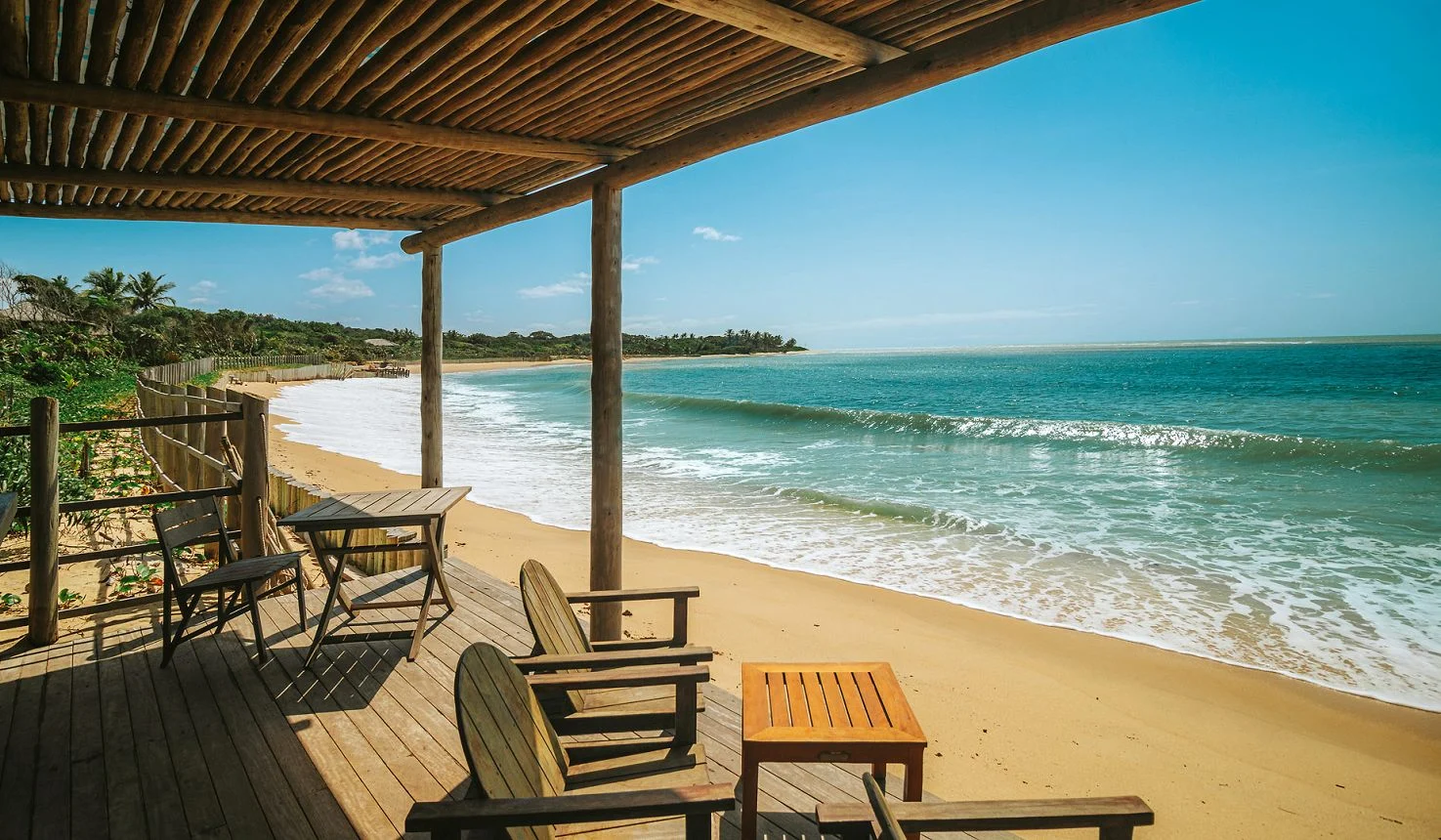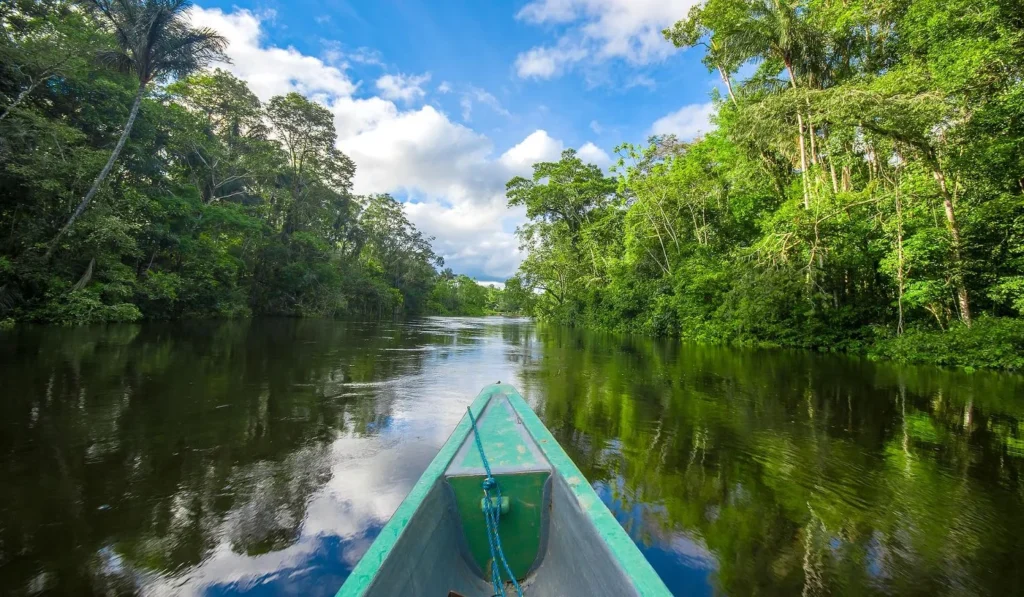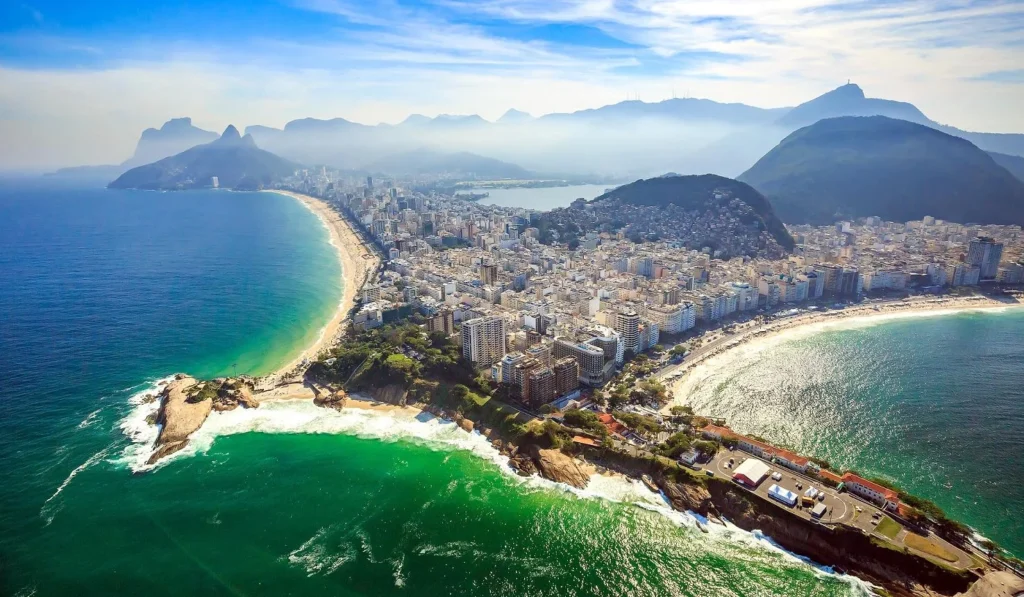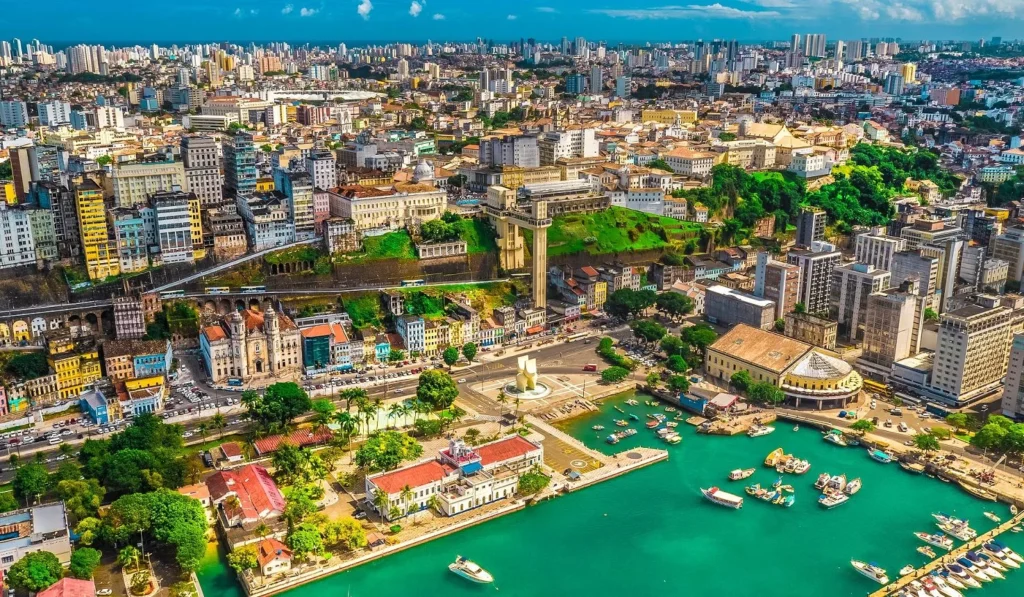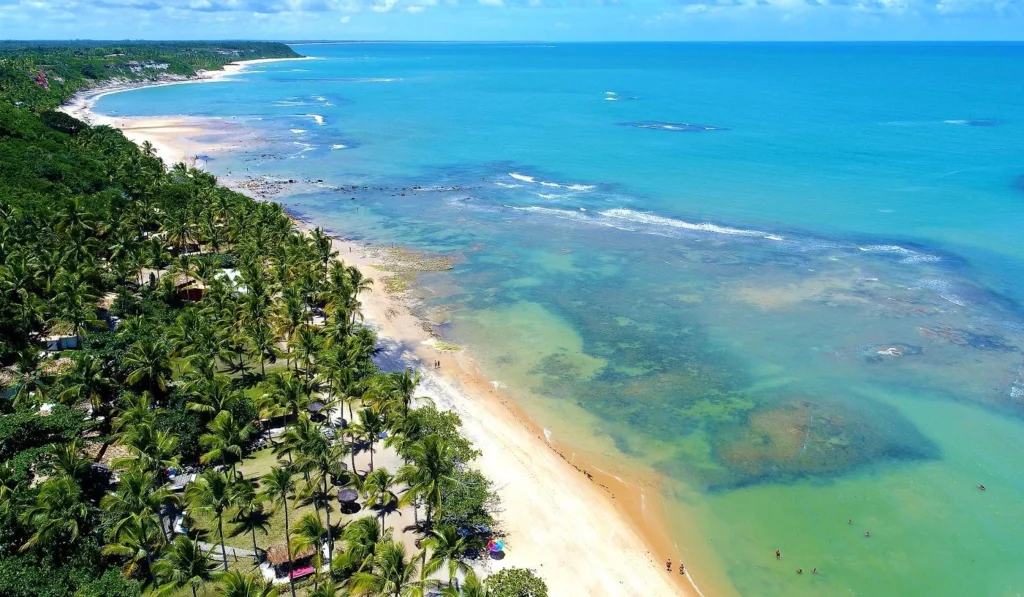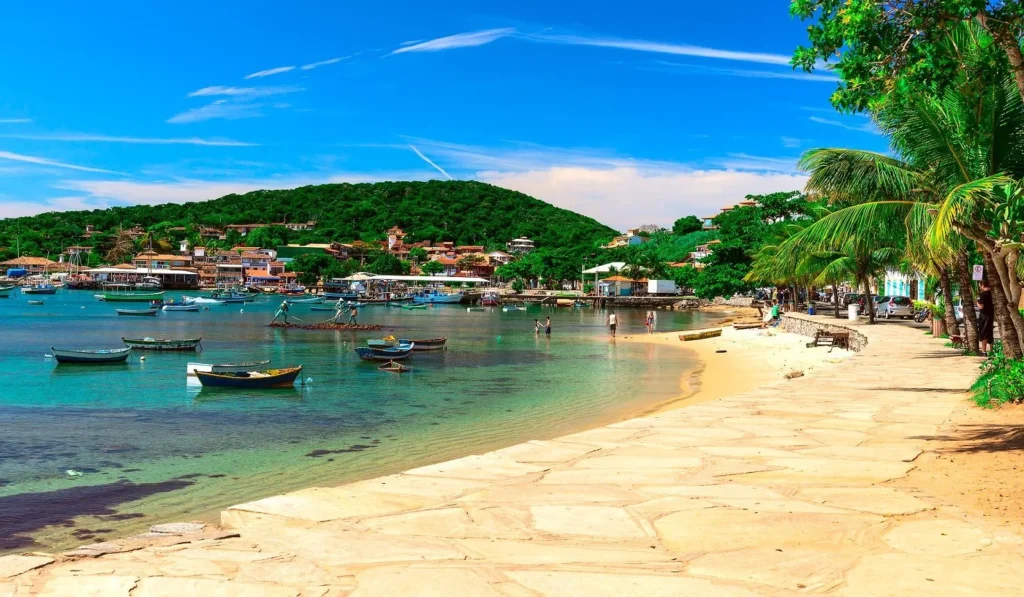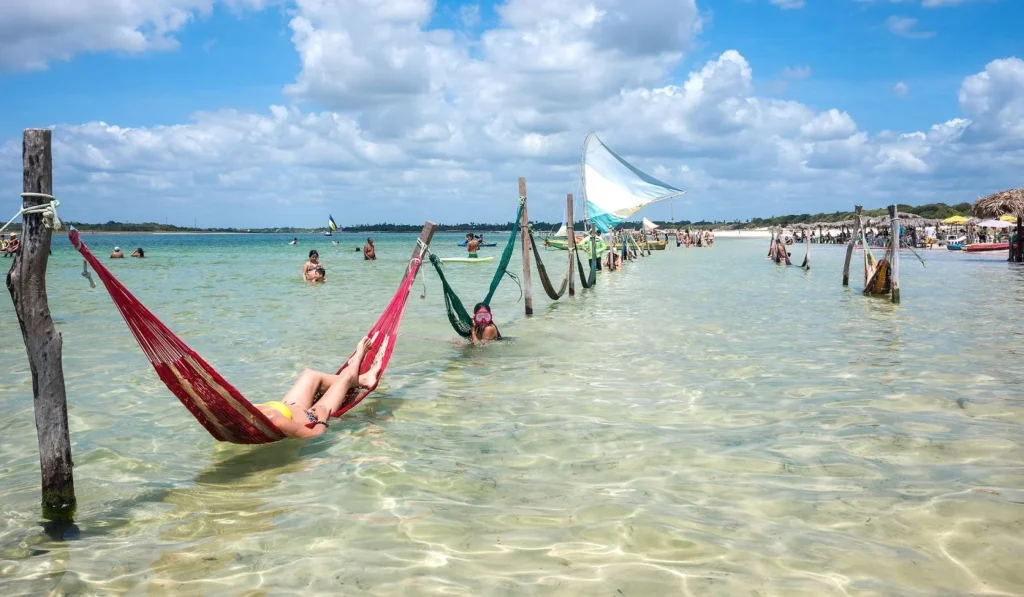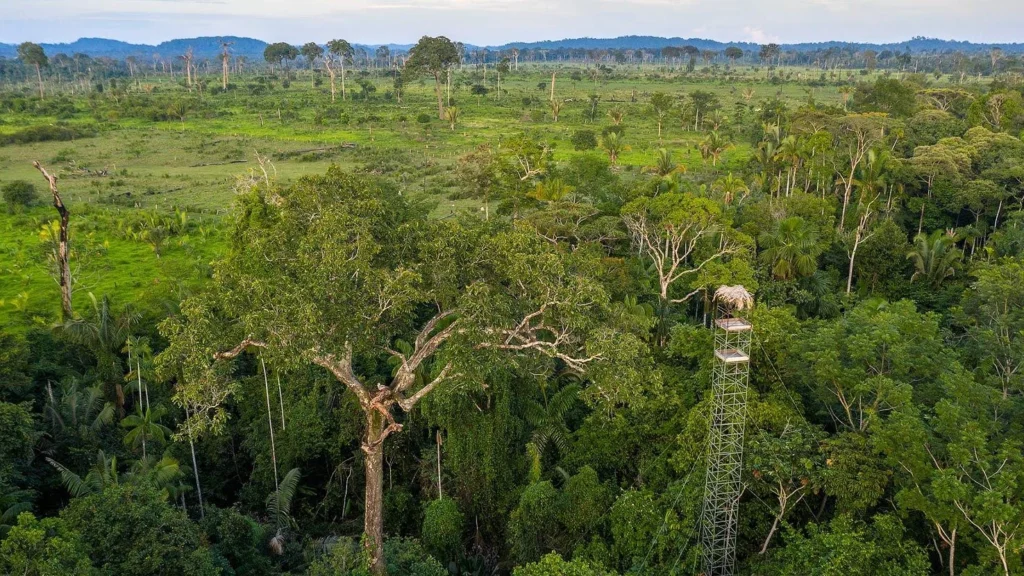
Travel to Costa Verde
Costa Verde
is an attractive coastline
south of Rio de Janeiro

the famous ‘Road of Gold’ into the interior
Costa Verde is the stretch of the Brazil coastline that runs from Rio de Janeiro, south for around 250 km to Santos (close to Sao Paulo).
In this area, the mountains of the Serra do Mar extend all the way down to the coast, creating an area of wonderful scenery, covered by lush tropical Atlantic rainforest.
This rainforest is protected by a number of conservation areas, which host a very wide range of flora and fauna.
The coastline also contains a number of quaint ports, with connections to historic gold-mining, coffee-growing and fishing interests.
This is the part of the coast to head to if you are into quirky, authentic small hotels, which serve as bases from which to go hiking, exploring, sailing and diving.
If you would instead prefer a more upmarket, comfortable and relaxed beach location, then you might like to instead take a look at Buzios, on the north side of Rio de Janeiro.
Ilha Grande
At the heart of the Costa Verde, around 100 km southwest of Rio de Janeiro, lies Ilha Grande, which measures approximately 30 km by 10km. This mountainous island is cloaked in lush Atlantic rainforest, fringed by some gorgeous remote tropical beaches.
For over a century up to 1994 the island was largely off-limits, initially due to its designation as a leper colony, more latterly due to the presence of a high security prison. As a result, the beautiful natural landscapes are largely pristine. These days 87% of the island is fully protected by the Ilha Grande State Park.
Ilha Grande represents one of the largest and most pristine areas of Atlantic rainforest in South America and one of the richest ecosystems in the world, containing important populations of rare species including brown howler monkeys, maned sloths, red-browed Amazon parrots and broad-snouted caimans.
The seas around the island, which are also protected, feature a unique convergence of tropical, subtropical, and temperate-zone marine life. This is the only place in the world where you can see corals, tropical fish, sharks, dolphins and turtles, alongside penguins, southern right whales, humpback whales and orcas.
The island is very lightly inhabited, with the largest village, Vila do Abraão, having just 2000 inhabitants. There are no roads or motorised vehicles, just a network of 150 km (93 mi) of hiking trails, connecting the various coastal villages and remote beaches. There is also a small-boat shuttle service around the coast.
The island has some spectacular remote beaches, the best known of which are Praia de Parnaioca to the southwest and Praia de Lopes Mendes to the southeast, the latter being a renowned location for surfing.
Accommodation options are a bit thin on the ground, but there are a few small hotels in the Vila do Abraão area.
Paraty
Set in a sheltered bay on the mainland coast, around 140 km south of Rio de Janeiro, Paraty is an historic small town, with a wealth of authentic architecture and surrounded by mountains covered by Atlantic rainforest.
The village was established by the Portuguese in 1597, on land populated by the Guaianás people.
It first rose to prominence a century later, when gold was discovered in the mountains of Minas Gerais, further inland. The famous Caminho do Ouro (Gold Road) was constructed over 1200 km (720 miles) inland from Paraty, to convey supplies, miners and African slaves by mule train over the mountains, returning with the gold bullion, which was shipped on to Rio de Janeiro for export. However, following repeated attacks by pirates on the ships between Paraty and Rio, a new road was constructed to take the gold directly from the mines to the capital and Paraty was cut out of the loop.
Between 1800 and 1850 the town experienced a resurgence, thanks to a boom in local coffee and cachaça (rum) production, but subsequently fell into serious decline and became very much a forgotten backwater, largely under-populated and unchanged for 150 years.
Since 1990 Paraty has started to experience a third wave of economic activity, as both local and international tourists have started to visit, attracted by the superbly-preserved architecture, sleepy atmosphere and rich surrounding forests, as well as regular literary and cultural events.
The historic town centre (from which motorised transport is excluded) is dominated by some impressive historic buildings, set on a network of quaint cobbled streets. There are four historic Baroque churches and two forts, plus various museums and galleries.
Interestingly, during high tides the centre of town is allowed to flood and raised walkways are provided for the benefit of pedestrians.
Many of the colourful colonial houses have been refurbished and been transformed into shops, pousadas (bed-and-breakfast hotels), restaurants and bars.
There are some significant opportunities for hiking an extensive network of trails through the surrounding mountains, exploring the Atlantic rainforest, with its wealth of flora and fauna, as well as hidden waterfalls. Sections of the historic Caminho do Ouro have also been restored.
It’s also possible to charter boats to explore the coastline, including the beautiful remote beaches of the mainland peninsular and the Ilha Grande.
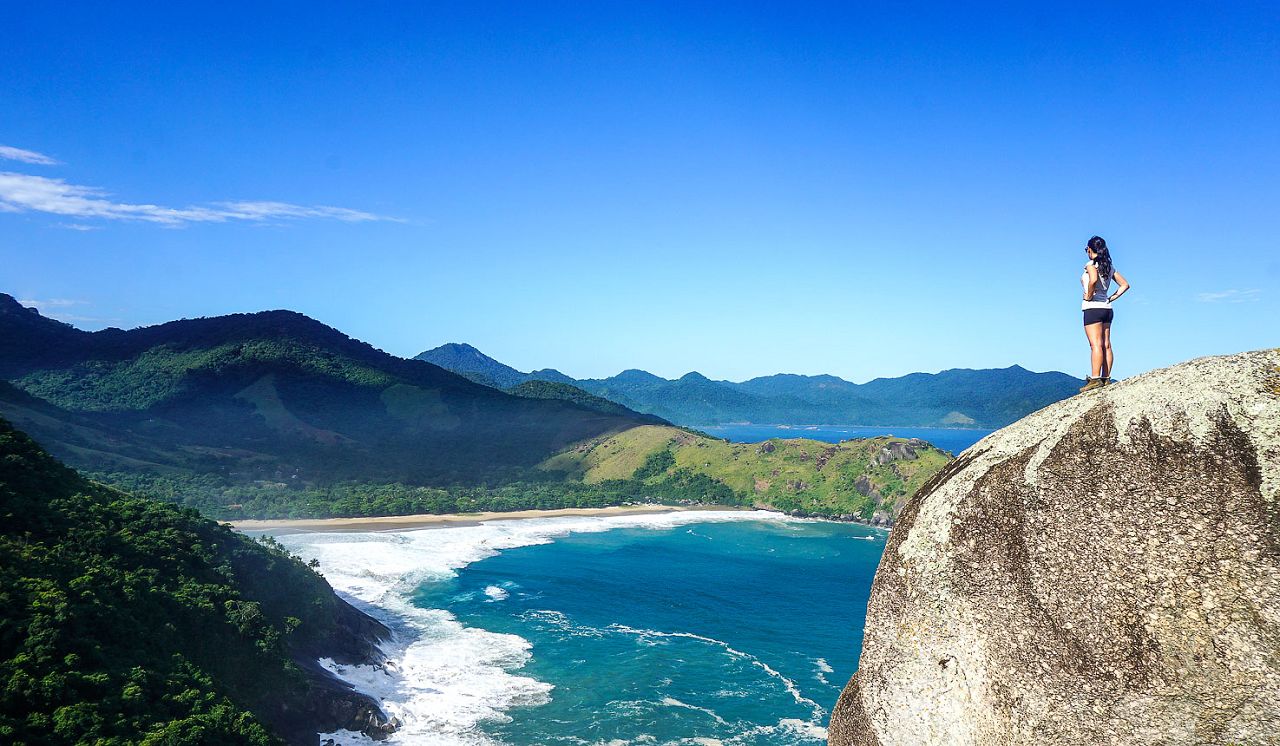
Gallery
Map
The best time to visit the Costa Verde is generally considered to be during the May-Oct cool dry season.
The area is classified as having a tropical savanna climate, with two clearly defined seasons …
May-Oct : winter
During the May-Oct dry season the daytime temperatures are lower than usual at around 25C/77F, whilst the nighttime low temperatures hold up around 19C/66F. However the rainfall is much lower than usual, dropping to around 50mm (2”) per month. Sunshine is around 6 hours per day (around 60% of daylight hours), meaning that skies are not always as clear as you might expect.
During this period cold fronts can occasionally arrive from the south, causing temperatures to drop below what one might consider to be comfortable beach weather, but which is pleasant for hiking and exploring the city.
Despite the pleasant cooler weather, this period tends to be relatively quiet, with far fewer locals out on the beaches and in the bars. But it’s not like winter in the Mediterranean, this coastline is very much open year round.
The town of Paraty holds a renowned International Literary Festival, usually during July, for which time it’s usually a good idea to book well in advance.
Nov-Apr : summer
During the Nov-Apr rainy season the daytime temperatures are marginally lower at around 31C/88F, whilst the nighttime low temperatures are higher, at 23C/73F. Rainfall is relatively high, at around 125mm (5”) per month. Sunshine is around around 7 hours per day (around 60% of the slightly longer daylight hours).
Despite the apparently adverse weather, this period is generally the most busy on the Costa Verde, so the beaches can start to lose their remote appeal and accommodation tends to get fully booked well in advance.
Getting there
The vast majority of visitors to the Costa Verde do so as an extension to a stay in Rio de Janeiro, usually for around 4-6 nights.
The Costa Verde is usually accessed from Rio de Janeiro. From Copacabana Beach it’s a drive of around 50-100 km (30-60 miles), to reach one of the small ports around the bay of Ilha Grande, a little further to Paraty itself.
It’s also possible to access the Costa Verde from the main airport at Sao Paulo, a rather longer road journey of around 250 km (150 miles).
Where to stay
Although it is possible to split your stay on the Costa Verde between lodges, one in Paraty and one on Ilha Grande, most people ultimately end up choosing one or the other location.
If you are into the history and culture of the area, then you should probably focus on Paraty, which also offers some great forest hiking, beaches and boating. There’s some really nice small hotels here.
If nature, hiking and beaches are really your thing, then you might consider staying on Ilha Verde instead, although the choice of accommodation is much more limited.
spend a whole week exploring the area
let us know your thoughts about Brazil
and we will help you create the perfect trip
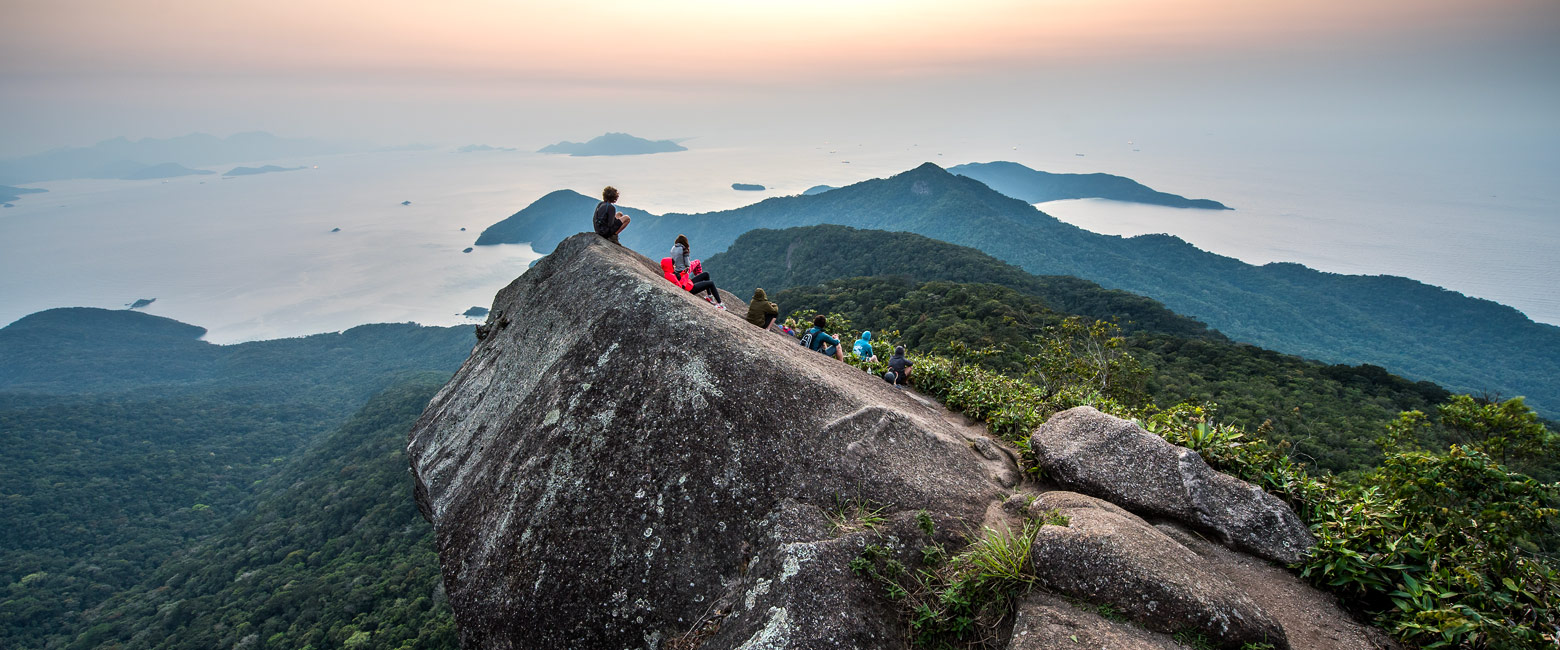
Extraordinary tailor-made adventures,
from earthy and edgy to easy and extravagant
From around USD 2500 per person, you set the ceiling
Sample Trips
Here are some of our popular trip shapes

Get started on your trip
It’s never too soon to get in touch, we are here to help with every stage of your planning.
Best Lodges
We regularly inspect and photograph all of the the best lodges, to ensure that we always recommend the most suitable options
Key Locations
Take a look around related locations. Click ‘View more’ to explore locations further afield.
Where Next?
Where Next?
We offer trips to dozens of fabulous countries.
Might one of these might be your next great adventure?

Please rotate your screen.


















